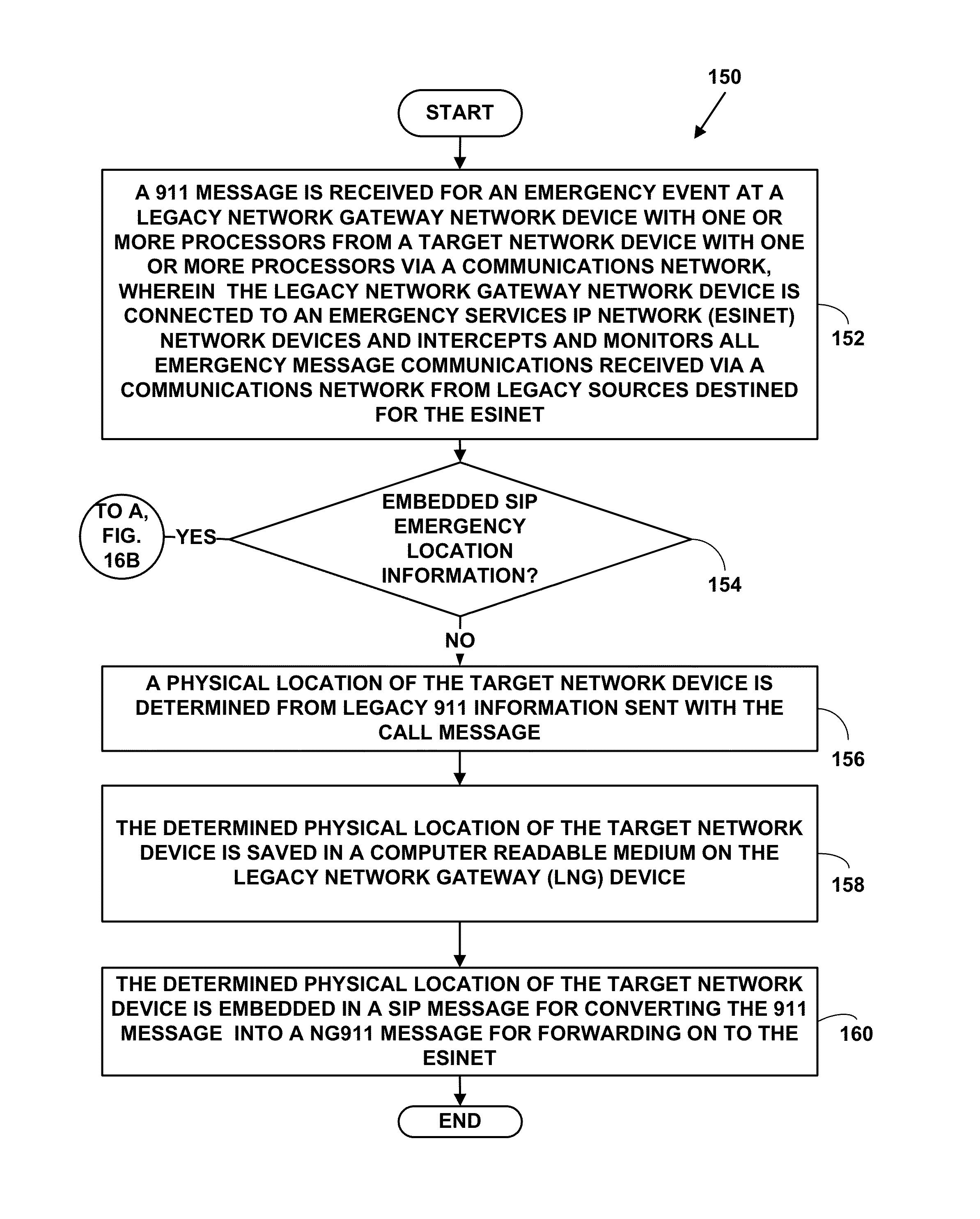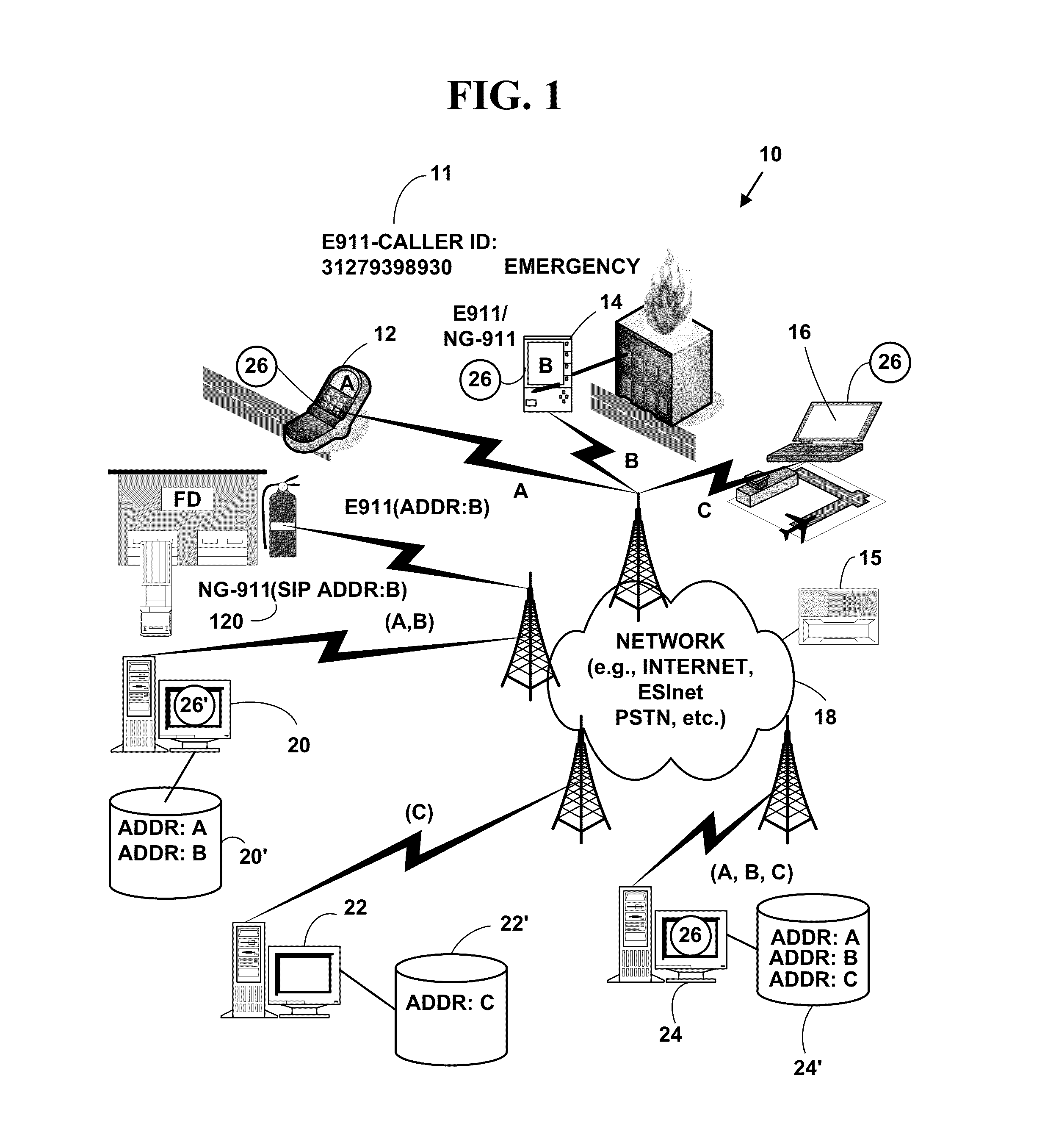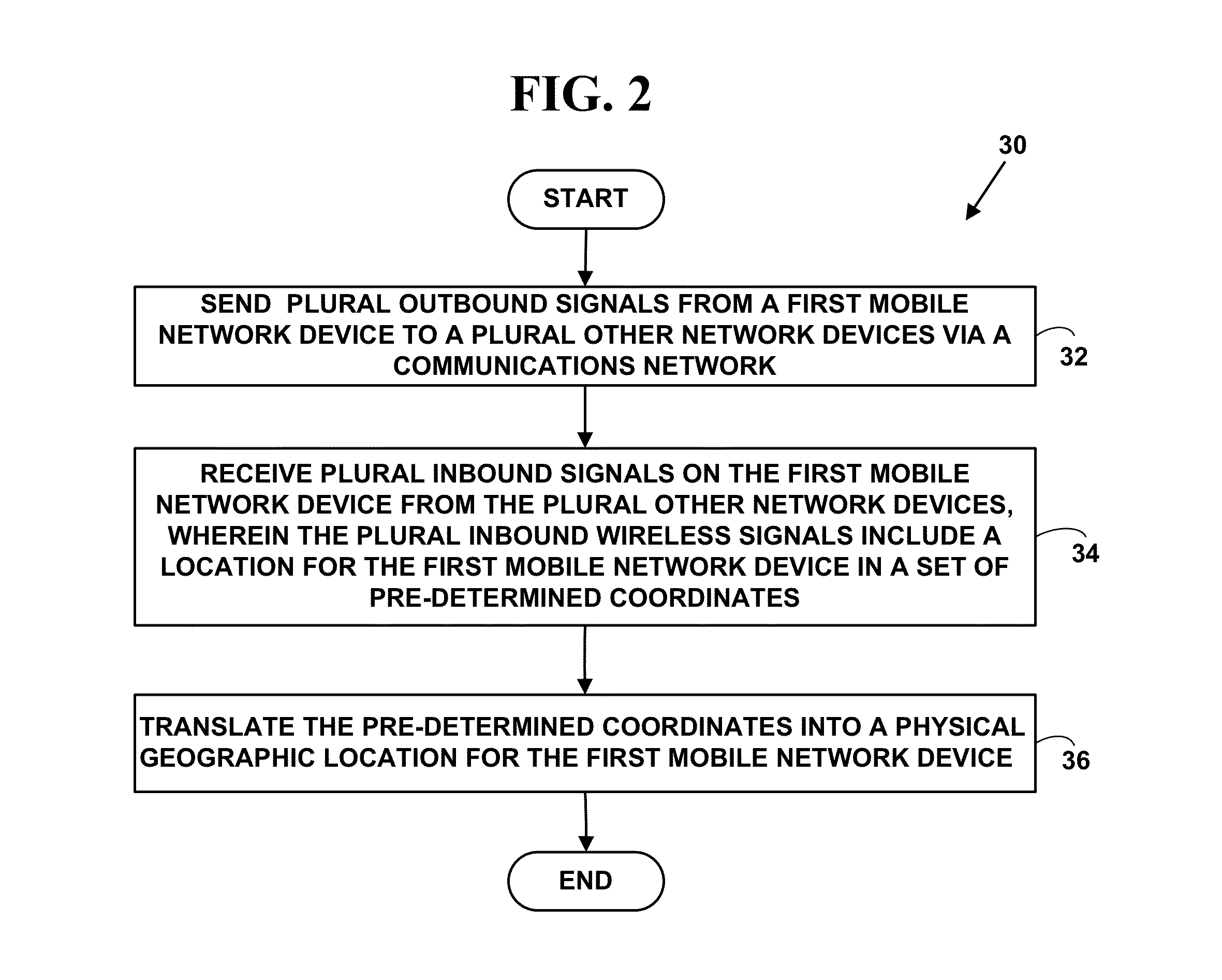Emergency location information gateway for public safety answering points (PSAPs) and method of use
a technology of emergency location information and public safety, applied in the field of automatic processing of location information, can solve the problems of inability to accuracy, and the like, and the prior art methods of accomplishing such locations do not meet the requirements of rapid location determination, automation, and accuracy
- Summary
- Abstract
- Description
- Claims
- Application Information
AI Technical Summary
Benefits of technology
Problems solved by technology
Method used
Image
Examples
Embodiment Construction
Exemplary Electronic Information Message Processing System
[0035]FIG. 1 is a block diagram illustrating an exemplary communications system 10. The exemplary communications system 10 includes, but is not limited to, one or more target network devices 12, 14, 16 (only three of which are illustrated). The target network devices 12, 14, 16 include, but are not limited to, mobile phones, non-mobile phones, non-mobile computers, wireless devices, wired devices, game devices, laptop computers, personal information devices, personal digital / data assistants (PDA), hand-held devices, network appliances, Internet appliances, two-way pagers, etc. However, the present invention is not limited to these target electronic devices and more, fewer or others types of target electronic devices can also be used. The target network devices 12, 14, 16 function as client devices in some instances and server devices in other instances. The target network devices 12, 14, 16 may be wireless or wired as illustr...
PUM
 Login to View More
Login to View More Abstract
Description
Claims
Application Information
 Login to View More
Login to View More - R&D
- Intellectual Property
- Life Sciences
- Materials
- Tech Scout
- Unparalleled Data Quality
- Higher Quality Content
- 60% Fewer Hallucinations
Browse by: Latest US Patents, China's latest patents, Technical Efficacy Thesaurus, Application Domain, Technology Topic, Popular Technical Reports.
© 2025 PatSnap. All rights reserved.Legal|Privacy policy|Modern Slavery Act Transparency Statement|Sitemap|About US| Contact US: help@patsnap.com



